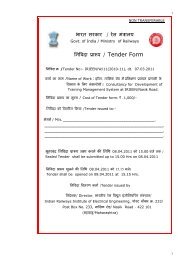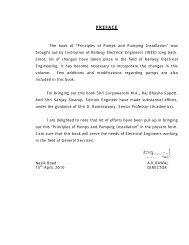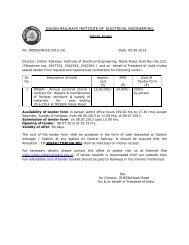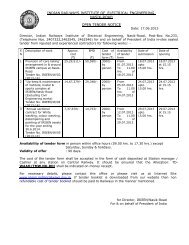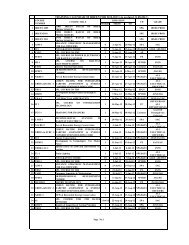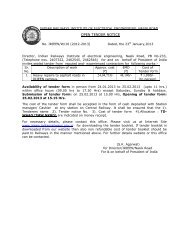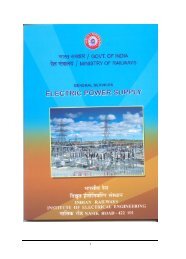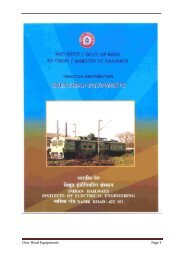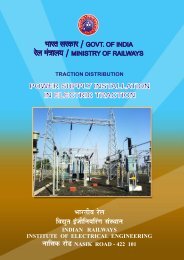Traction Rolling Stock - Indian Railways Institute of Electrical ...
Traction Rolling Stock - Indian Railways Institute of Electrical ...
Traction Rolling Stock - Indian Railways Institute of Electrical ...
Create successful ePaper yourself
Turn your PDF publications into a flip-book with our unique Google optimized e-Paper software.
8. MAINTENANCE, AND OVERHAUL<br />
SCHEDULES OF LOCOMOTIVES<br />
8.1 MAINTENANCE SCHEDULES<br />
<strong>Indian</strong> <strong>Railways</strong> have gained considerable experience with the maintenance <strong>of</strong> electric<br />
locomotives since 1960. Based upon the safety requirements, various checks have been<br />
evaluated and already standardized. Also, based upon the investigations into failures, special<br />
maintenance instruction (SMIs) have been issued by RDSO from time to time. Even for new type<br />
<strong>of</strong> locomotives, standard equipment like pantographs, circuit breakers etc. continue to be used and<br />
established maintenance practices for such equipments will, therefore, be applicable.<br />
The scope <strong>of</strong> maintenance work to be followed in each maintenance schedule can be<br />
arrived at, based upon the following -<br />
8.1.1 Maintenance instructions as furnished by manufacturer for a new type <strong>of</strong> rolling stock.<br />
Copies <strong>of</strong> these manuals will be readily made available for reference whenever required by<br />
maintenance staff, for each type <strong>of</strong> equipment in use.<br />
8.1.2 Maintenance instruction already developed by a zonal railway for standard equipments.<br />
8.1.3 Specific instructions already laid down regarding safety requirements/fire prevention<br />
requirements etc. <strong>of</strong> the rolling stock.<br />
8.1.4 Rich experiences <strong>of</strong> the system taking into account adverse environmental conditions in<br />
which electric locomotives are expected to perform satisfactorily like high temperature, high<br />
humidity, extremely dusty conditions etc.<br />
On the above line, maintenance schedules for electric locomotives <strong>of</strong> different classes<br />
and types already in service have more <strong>of</strong> less reached to an optimum level. Thus there may be<br />
little necessity for changes. There can be, <strong>of</strong> course, marginal changes as dictated by further<br />
service experience.<br />
As far as new types <strong>of</strong> electric locomotives/their sub-assemblies that may be introduced<br />
from time to time, principles enumerated above are to be followed for arriving at optimum scope <strong>of</strong><br />
work consistent with periodicity <strong>of</strong> prescribed schedules.<br />
8.2 ALTERATIONS IN MAINTENANCE SCHEDULES<br />
Presently individual railways might have made minor alterations in the schedules based<br />
upon their own experience. Considering the wide variations in operating and duty cycles and<br />
environments as experienced in different systems, this would be considered logical. However, the<br />
recent trend is to enlarge the field <strong>of</strong> operation <strong>of</strong> electric locomotives. Thus, today electric<br />
locomotives <strong>of</strong> one system are running in other systems. Thus alterations in schedules based<br />
upon local experience will have to give way to standardisation <strong>of</strong> schedules so that locomotives <strong>of</strong><br />
one system will perform satisfactorily when called upon to operate in other systems.<br />
In the light <strong>of</strong> experience and improvements based upon trials <strong>of</strong> modifications, it may




